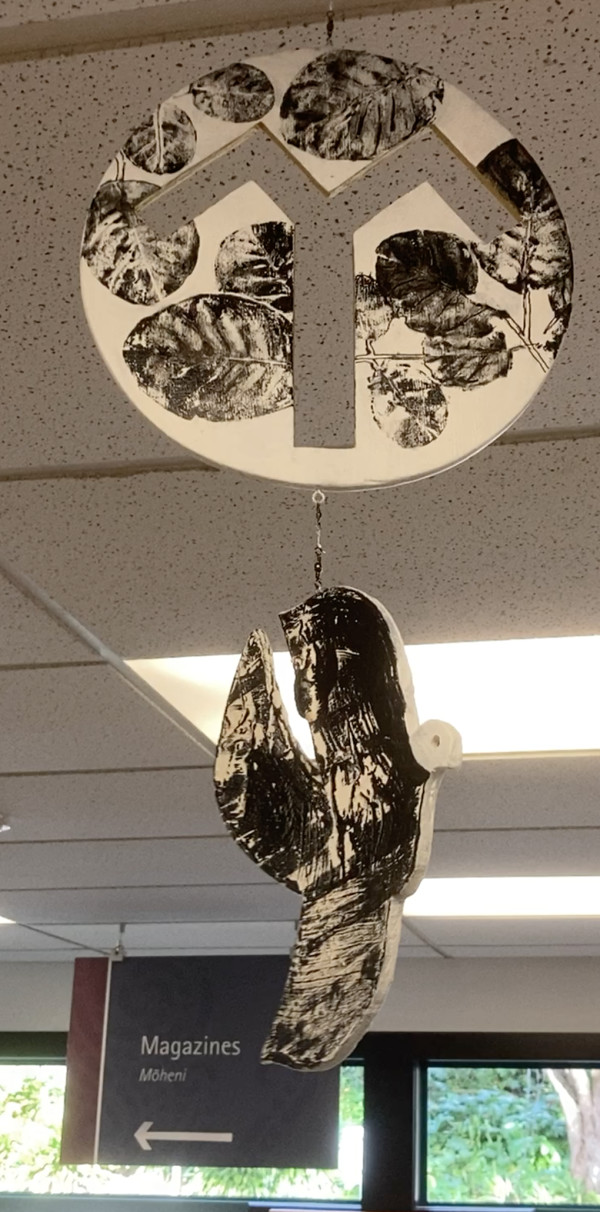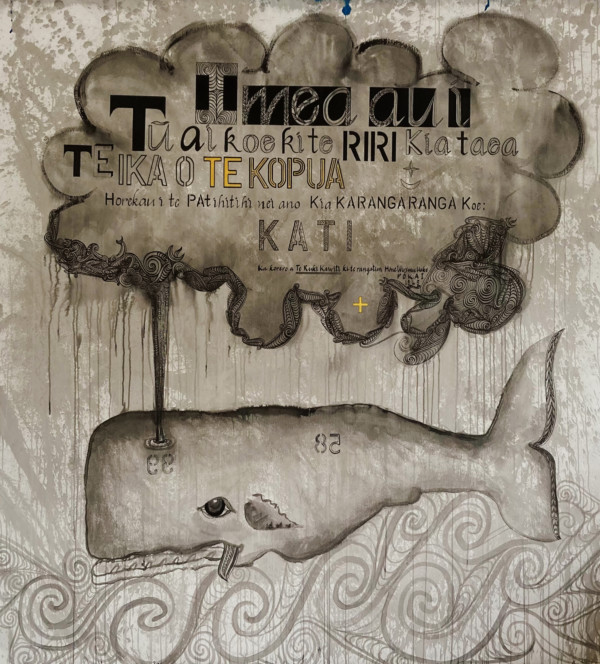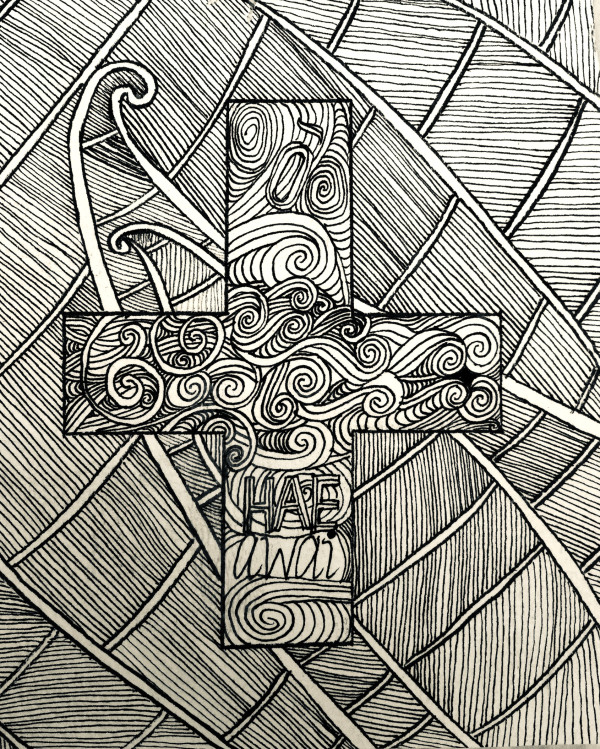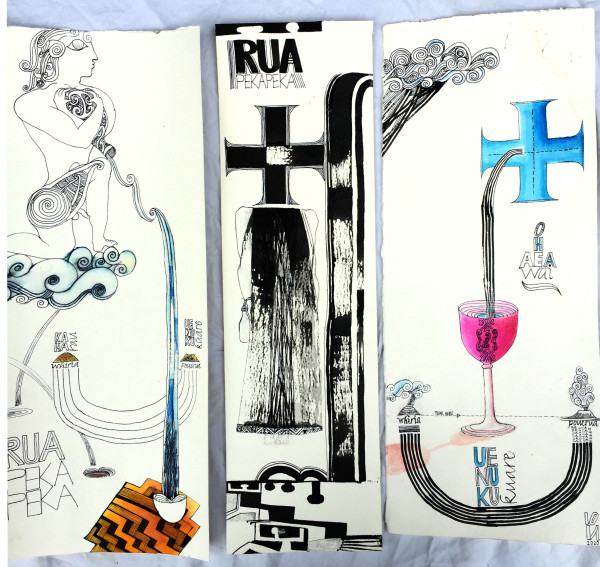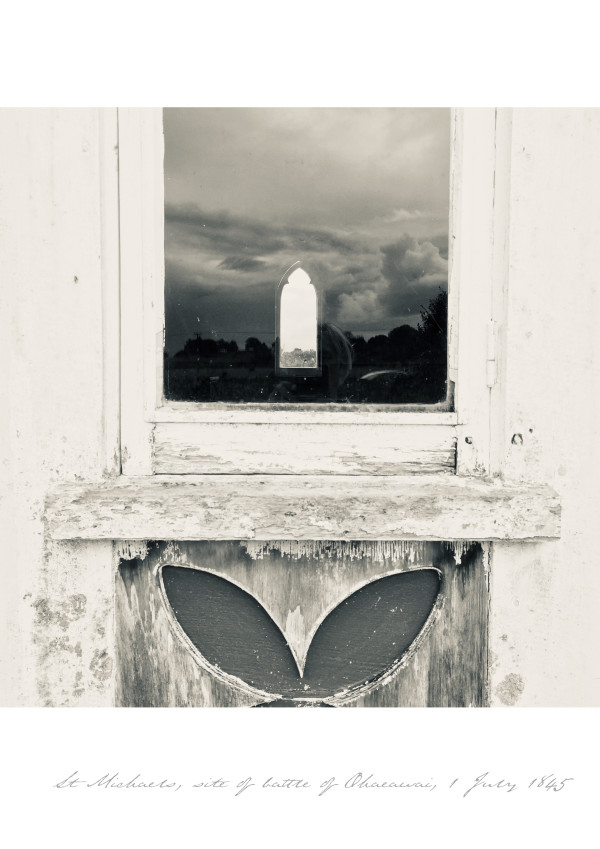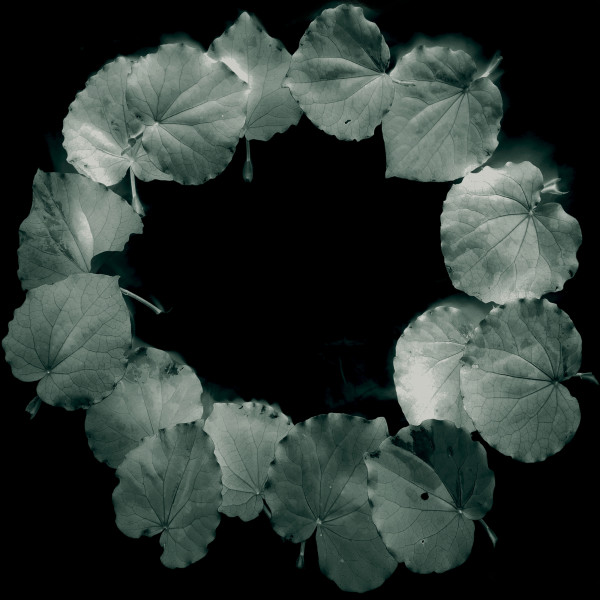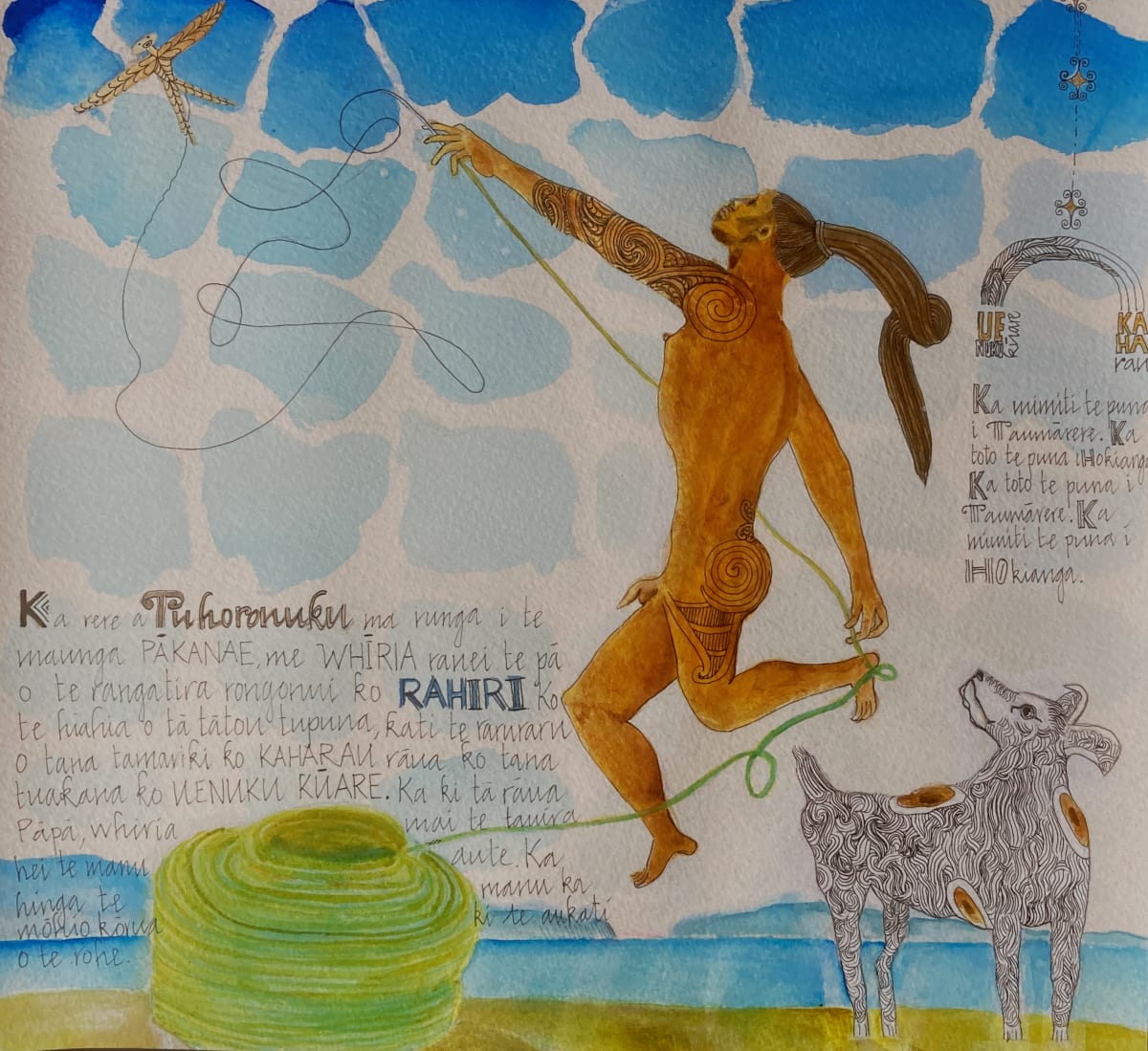
The struggles between founding ancestors (Uenuku and Kaharau) alluded to in 'He Mauri' drawing 'Ngāpuhi Ko Whao Rau' come to a head at the ancient fishing pā of Kupe. Rāhiri has left his first wife Āhuaiti at Pouerua with his first born son Uenuku. Meanwhile he has established a new family at Pākanae. When Uenuku grows up he makes a journey to locate his father. This creates raruraru 'conflict' with the younger brother Kaharau concerning the attempt to have his father affirm his tuākana 'senior' status in the whānau. To resolve the conflict Rāhiri gets the two fighting brothers to construct through whiriwhiri 'the twining of muka - processed flax' a rope that reaches around the circumference of the pā. Once completed he attaches the rope to his divinatory kite, his manu aute, and sets it alight. This drawing suggests that moment where Tūhoronuku takes to the sky as his pet kurī watches on. Where the kite lands after being re-flown a number of times becomes the boundary between the descendants of the two brother. Ka mimiti te puna i Taumārere ka toto te puna i Hokianga. Ka toto te puna i Taumarere ka mimiti te puna i Hokianga. 'When the spring is low or dried up in the Bay of Islands, it is high in Hokianga. When the spring is high in the Bay of Islands, it is low in Hokianga.' It was Rāhiri's desire that his two sons and their descendants would resolve their differences and come to the aid of the other during periods of weakness and strength.
- Subject Matter: Ancestral landscape + abstract motifs


![‘Let Justice roll down like waters and righteousness like an ever-flowing river' [Big River], 1-15 July 2021 by Dr Rangihiroa Panoho](https://assets.artworkarchive.com/image/upload/t_jpg_medium_width/v1/user_84694/Let_Justice_Roll_Down22_1.5x_e9crl4.jpg)
